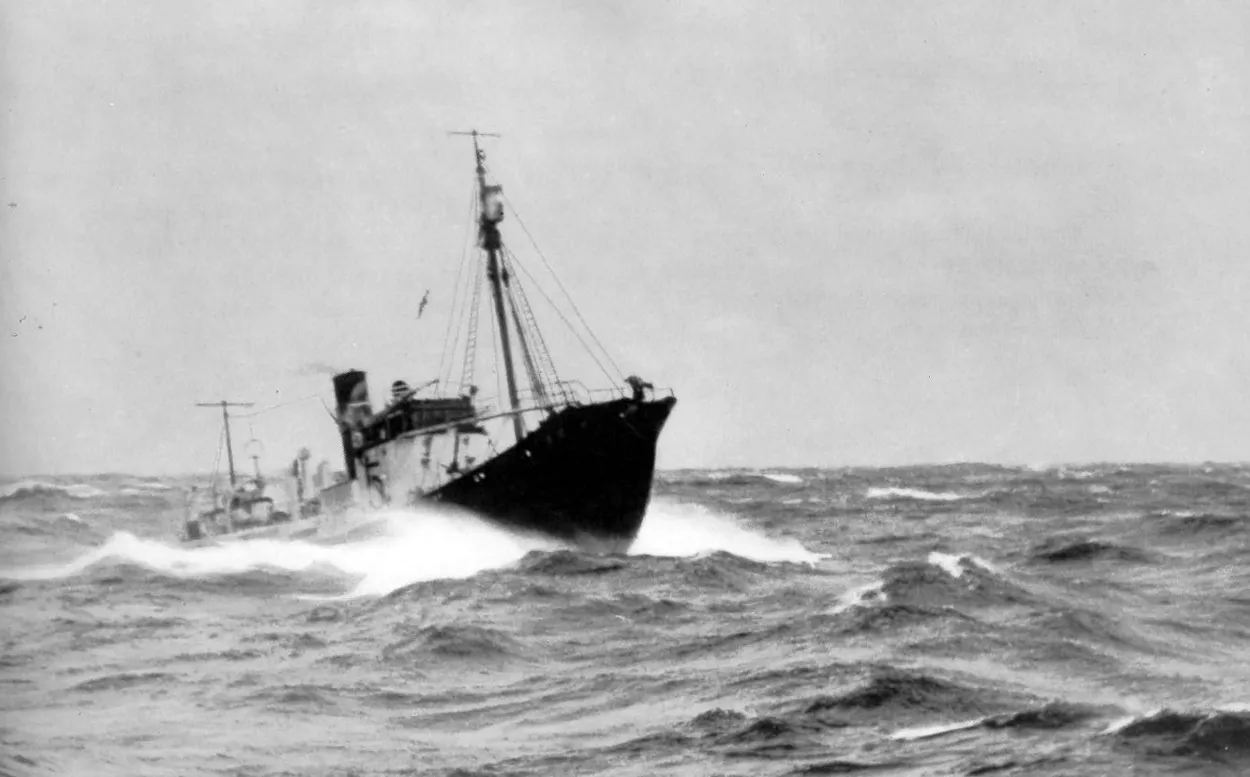Whale Catching Boat
Whales
and Whaling pictures
Next
Previous
Back to gallery
Back to whale and whaling
thumbnails
The boats used as whale catchers were small and quite powerful for the time. They could be as small as 40 tonnes though were typically 250 tonnes in the 1920's and early 1930's rising to 300-350 tonnes, some super catchers were built in the latter days of commercial whaling that were over 900 tonnes.
The "gunners bridge" can be made out on this boat, this is a walkway that leads from the wheelhouse to the gun platform in the bow of the boat where the gun can be seen protected by a tarpaulin here. This addition to the catcher boats meant that the gunner could easily get to the harpoon gun quickly and easily when a whale was sighted.
This is a small 1930's German catcher boat of about 350 tonnes en route to Antarctica. The crews of the catcher boats were the best paid of all the members of a whaling expedition and they endured the absolute worst living conditions. They had to travel to Antarctica and back again in their boats which had minimal comforts and were frequently cold and damp for weeks or months on end. The only time often that the crew could change out of their oilskins was when they retired to their bunks which they did in shifts so as to keep a crew on watch at all times.
The boats were so small and so exposed that only a fairly gentle wind and "low sea" would cause the sea to wash across the deck meaning that it was not possible to stay out on deck often or for long. The boats had a cook and his job was often difficult at best and sometimes impossible in heavy seas.
They were designed for the catching of whales and for that job only, all available space (of which there was little enough anyway) was designed to help in the catching of whales. With such a small amount of the boat out of the water and being almost constantly washed over it required that the hatches be battened down and all doors and scuttles kept closed. The result of this was that the atmosphere was almost continually damp and stuffy. Wet clothes hung up in the forlorn hope that they would dry added to the damp and gave a smell of mould to the mix.
Great care had to be taken at almost all times moving around the boat, particularly in the engine room and a hand-hold maintained wherever possible. As a whaler from Grytviken (South Georgia) said of a particular trip "We only had a stoker killed", the stoker referred to was a young man who was flung into the engine as the boat lurched and ground to pieces. He lies along with many others in the churchyard in Grytviken.

